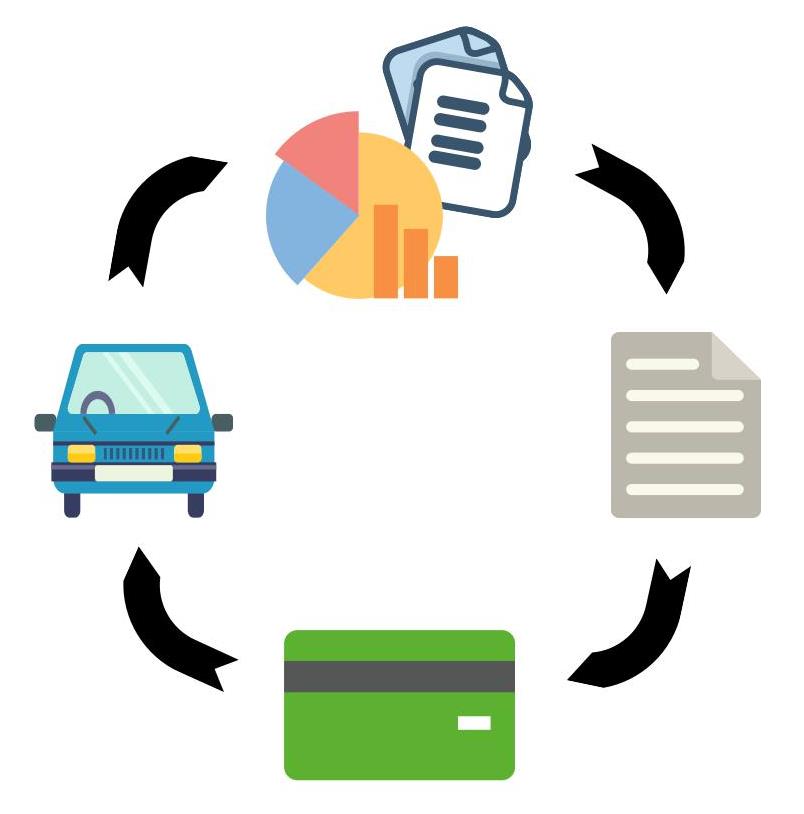Learning Zone
Using software to reduce inventory costs
Streamlined inventory management can have a very positive impact when it comes to controlling parts expenditure.
Here’s how software can help to reduce inventory costs…

It’s well-known that inventory costs account for a substantial portion of fleets’ maintenance and repair expenses, with operations often spending large amounts of time managing parts and other items (such as tyres, batteries, lubricants and fluids) in an attempt to strive for inventory optimisation.
“The transportation industry most likely has much higher repair costs because it operates a greater percentage of heavy trucks and specialized heavy equipment, which is much more costly to repair in terms of parts and labour, than conventional vehicles,” according to Automotive Fleet.
But a streamlined inventory management practice can help to reduce inventory costs by improving your parts expenditure – providing a measurable, positive impact on your fleet’s bottom line.
When it comes to improving your parts management processes, fleet inventory management software can be of great benefit, helping you:
- Improve visibility
- Become more organised
- Make more informed operational decisions
- …and much more
Here are some top outcomes it could help you achieve:
Lower parts costs:
Lower your parts costs through effective stocking and purchasing practices; inventory levels can be monitored and adjusted based on parts use and upcoming needs. Parts can be seamlessly allocated from repair orders, and purchase orders can be automatically issued to preferred vendors when they drop to a pre-determined quantity. This practice will reduce costs by driving automated inventory replenishment and minimising manual administration.

More recovered costs:
It’s easy to know when an item on a new vehicle is covered by warranty … but tracking aftermarket parts coverage is a challenge for many fleets in a variety of industry segments.
And not claiming warranty on replacement parts is like leaving money on the table.
Fleet inventory management software can begin tracking warranty once a replacement part is installed in your vehicle – and can create alerts if a covered item is noted to have failed within the warranty period. These systems can also initiate automated claims processes with manufacturers, and alert technicians of deadlines required to return any failed covered item.
Reduced fleet financial (and other business processes) costs:
Manual, paper-based parts inventory systems are unproductive and ineffective. Instead, fleets can improve visibility over their purchases by integrating fleet management software with financial and other applications, including external parts suppliers’ systems.
A system that is integrated in this way helps ensure data accuracy. By automating parts ordering processes, such a system can also reduce demands on administrative, financial and other departments – helping to reduce inventory costs and staffing requirements.

Streamlined maintenance, technician productivity and repair activities:
Labour costs for technicians add up quickly when a part is out of stock or not easily-located. If you don’t stock the right inventory for a fleet’s vehicles based on upcoming scheduled maintenance, seasonal or other planned campaigns, you may experience decreased productivity and increased downtime.
But software-based inventory control and management programs can provide you with more efficient purchasing practices that maintain correct stocking levels, eliminate obsolete and uncommon parts and high-cost emergency parts orders, and prevent overstock situations.
When parts inventory management software is in place, your fleet’s shop and technician productivity can rise, boosting asset utilisation and reducing inventory costs by returning vehicles to service faster.

Better visibility, understanding and utilisation:
It’s beneficial to understand which parts work best in an operation, for more informed future choices, extended effective service life and reduced downtime. (After all, focusing only on the price of a part does not account for its full impact on bottom line costs.)
Fleet inventory management software can be used to help identify repetitive part failures or low-performing parts. It can be used to perform comparative analyses between manufacturers and parts and build a more in-depth picture of component longevity data and cost histories on parts for each vehicle in a fleet.
That information can help you to reduce inventory costs by enabling you to develop budgets for parts expenditures and make more informed and effective purchasing decisions.
Adding it all up
Reduced inventory costs can be realized when a parts system is an integral part of your fleet maintenance management solution.
In short, systems for efficiently managing parts inventory are an important element of asset utilisation. They are incredibly useful in helping enable more effective strategies for reducing both vehicle downtime and unnecessary expenditure.




